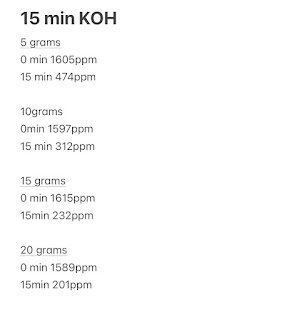Ingrid's Day 6 Sr.Project
Ingrid Wu's Day 6 Blog
May 13 2023
Research
Today, I did research about the carbon capture process and various catalyst. I also learned the most popular form of catalyst is amine in most industry.
Catalysts or absorbents is a way to let the reaction happen as shown in Eqs. 1., an aqueous amine solution is the most known and used absorbent for the carbon mineralization process. The amine solution assists to increase the concentration of the CO2 collected from the atmosphere to make the storage process more efficient (Harinandan Kumar, & Ravikumar, S., 2010).
R1R2NH + CO2 (aq) R1R2NH+CO2- (1)
R1R2NH + R1R2NH+CO2- R1R2NH+ + R1R2NCO2- (2)
R1R2R3N + H2O + CO2 (aq) R1R2R3NH+ + HCO3- (3)
Eqs.1. The chemical reaction between amine and carbon dioxide.
HCO3- + OH- CO32- + H2O (4)
Conversion process of bicarbonate to the final product carbonate through ionization (Chemistry Stack Exchange, 2018).
Monoethanolamine (MEA) is a primary amine and one of the R1R2NH used in Eqs. 1. In a two-step reaction, primary and secondary alkanolamines react with dissolved CO2, forming first a zwitterion (1), then protonating an unionized amine, producing carbamate (2). In the reaction of tertiary amines with CO2, a protonated amine and a bicarbonate anion are formed (3) (CO2 Handling: Solid Phase Amines. (n.d.)).
The reaction of MEA with H2O and CO2 to form pure carbon dioxide for recollection into amine solution is shown in Figure 1. Monoethanolamine (MEA) here is used as an example of the Primary alkanolamines reacting with dissolved CO2 in two step reactions (Halme, n.d.) ((CO2 Handling: Solid Phase Amines. (n.d.)).
Figure 1. CO2 capture in the presence of monoethanolamine (Halme, n.d.).
Amine solution is usually used as an effective mineralization carbon capture base for CO2 to convert into a safer and stable Carbonate. The process is illustrated in Eqs. 1. Collecting the bicarbonate HCO3- in the third step in Eqs.1, CO3 can be gotten through HCO3- ionizing with H2O as shown in step 4. Considering the effectiveness of aqueous amine absorbent, the disadvantages may cause severe environmental and economic problems (Kang, 2018). As current amine solution has a relatively low CO2 absorption rate to make the solution reach an optimal CO2 loading concentration, it requires energy for regeneration of the amine to capture more amount of CO2 from the atmosphere.
Energy Penalty is a parameter to check how efficient the CCS process is. To produce a fixed quantity of work output, a fixed fraction of fuel must be devoted to CCS. Depending on the fuel input, the penalty can either be an increase in fuel consumption or a loss of output (House et al., 2009). The traditional method of amine solution regeneration has an energy penalty of 40% and consumes around 70% of the total energy used for the whole carbon capture process (Hamdy et al., 2021) (Rao & Rubin, 2002). Researchers discovered that most amine solutions are regenerated best under the temperature of 120 °C, while the operation and capital cost for the heat regenerating (thermal regeneration) of these amine solutions can be enormous (Kang, 2018). The high energy penalty is resulted from the fact that the entrance of CO2 into the solution is an in-spontaneous reaction (ΔG°reaction > 0) where it requires more energy for CO2 to start the precipitation process, but the diffusion of CO2 from the solution to the atmosphere is a spontaneous reaction where less energy is required by CO2 for this process. Thus, additional energy, from heat, is indispensable for amine regeneration (Hills, 2020).
This also shows the potential of future sustainable development of CSS.
Total Hours: 42h
Work Hours: 6h


Comments
Post a Comment